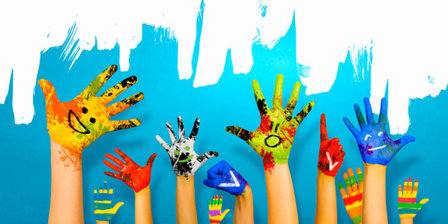Play Not Work Will Help Your Company Succeed Says Jabra. It is going to be all work and no play at work today? Yes? Maybe you should reconsider.
Enterprise gamification is making a big entry into business life, and soon we will all be playing, leaving disengagement and lethargic productivity in the past. It is your move!
 For years, we managers have had an odd problem on our hands: overly engaged employees. I call it a problem, because, somewhat surprisingly, it takes up so much of our time to attend to their needs and ensure that we engage the ten percent of overachievers, so they don’t burn out and leave us, if not the labor market altogether. The time spent discussing self-management and work-life-balance pros and cons and the efforts to move the next ten percent towards excellence, has cost us much (well-spent) time.
For years, we managers have had an odd problem on our hands: overly engaged employees. I call it a problem, because, somewhat surprisingly, it takes up so much of our time to attend to their needs and ensure that we engage the ten percent of overachievers, so they don’t burn out and leave us, if not the labor market altogether. The time spent discussing self-management and work-life-balance pros and cons and the efforts to move the next ten percent towards excellence, has cost us much (well-spent) time.
As it turns out, though, the problem is not so much the time spent communicating with and about the overly ambitious employees. Rather, the problem is the consequence: neglect of the rest of the workforce. According to a Gallup poll, disengagement in the workplace is now a 370 billion dollar problem in the US alone, and, according to Gartner, 70 percent of business transformation efforts fail due to a lack of engagement among the employees.
Luckily, there are new tools available, which can help to regain the attention of your entire workforce. A new trend has seen the light of day which seems effective in the fight against disengagement: enterprise gamification. A trend which I am not alone in finding interesting, seeing that it has grown from a worldwide market of 242 million dollars in 2012 to a projected 2.8 billion dollars in 2016. In other words, workdays should not only be productive – but also playful – enabling our employees to make games out of their daily work routines. Eventually, this leads to new goals and territories, because the games are likely to engage employees on a more personal level, thereby establishing friendships at work and thus strengthening the ties between the workplace and the workforce.
Google’s climbing wall
Gamification in the workplace is not necessarily a new phenomenon. In the 1990s, Google introduced play to the modern workplace with toys such as an in-office climbing wall, which drew the employees closer together and favorably blurred the barrier between work and play. Other companies without the funds for toys of that size introduced foosball and table tennis with similar results.
Now, before you start worrying about the noise a foosball table makes in an open office, let me clarify: a workday is supposed to be productive. But adding a bit of playful competition successfully increases the level of productivity. Games are as good for engagement as they are for the bottom line.
With the digital revolution, it is easier than ever to introduce gamification to your company. Most of us are inherently competitive, so the instant gratification of enterprise games will drive commitment, collaboration, and productivity to new levels (and save you from the noise from midday foosball matches).
Medals or money?
In case enterprise gamification is a new concept for you, let me explain. Gamification may increase the fun in throwing out the garbage by rewarding the thrower with a sound, a blinking light, or a merit badge, making throwing out the garbage into a little game. In terms of enterprise gamification, it could be a project management program, which awards employees according to their progress on a to-do list.
Companies have tried out many different strategies for how to engage the individual employee. Some have tried money as an incentive, but gamification is not about remuneration in financial terms. Besides, I find that monetary rewards breed expectation rather than entertainment.
Instead, individually, employees – or gamers – prefer working towards honors, medals, and merit badges as we have seen with the boy scouts, the social media platform, and Foursquare, for example. These merit badges are displayed to the community at work, thus bettering the individual’s social status in the workplace.
Enterprise gamification is even more effective in improving teamwork. There are some really good results from Microsoft which has tried several reward systems and found that the extrinsic rewards did not make gamers, who work with software testing, any more productive. However, when the teams worked together to collect funds for a charity, chosen by the team, and Microsoft’s contributions to the charity was tied to game (and productivity) results, the team members collectively increased user feedback and bug identification by a whopping 16 times over their non-gaming peers. That is impressive.
The wining team
I can see how that is possible. We have all been on great teams where nothing seemed impossible: winning teams; teams in which we are so engrossed with a common goal that little else matters. A game engine, I imagine, would amplify the experience enormously.
The more I see of enterprise gamification, the more interested I am in seeing one in action over a longer period of time and seeing some long-term results on the business, on the budget, the productivity, and the people involved. According to Gartner, 40 percent of the top 1,000 companies will use gamification in 2017, so it is something we will see much more of in the future. With this kind of momentum, I cannot help but wonder whether my future business cards, in addition to name, title, and contact information, will show a few merit badges and my high score on the corporate leaderboard.
I am game, if you are.
 Additional Information
Additional Information
Holger Reisinger is Senior Vice President of Marketing for Products and Alliances at Jabra.
For additional information see Jabra’s Website or view their Company Profile




